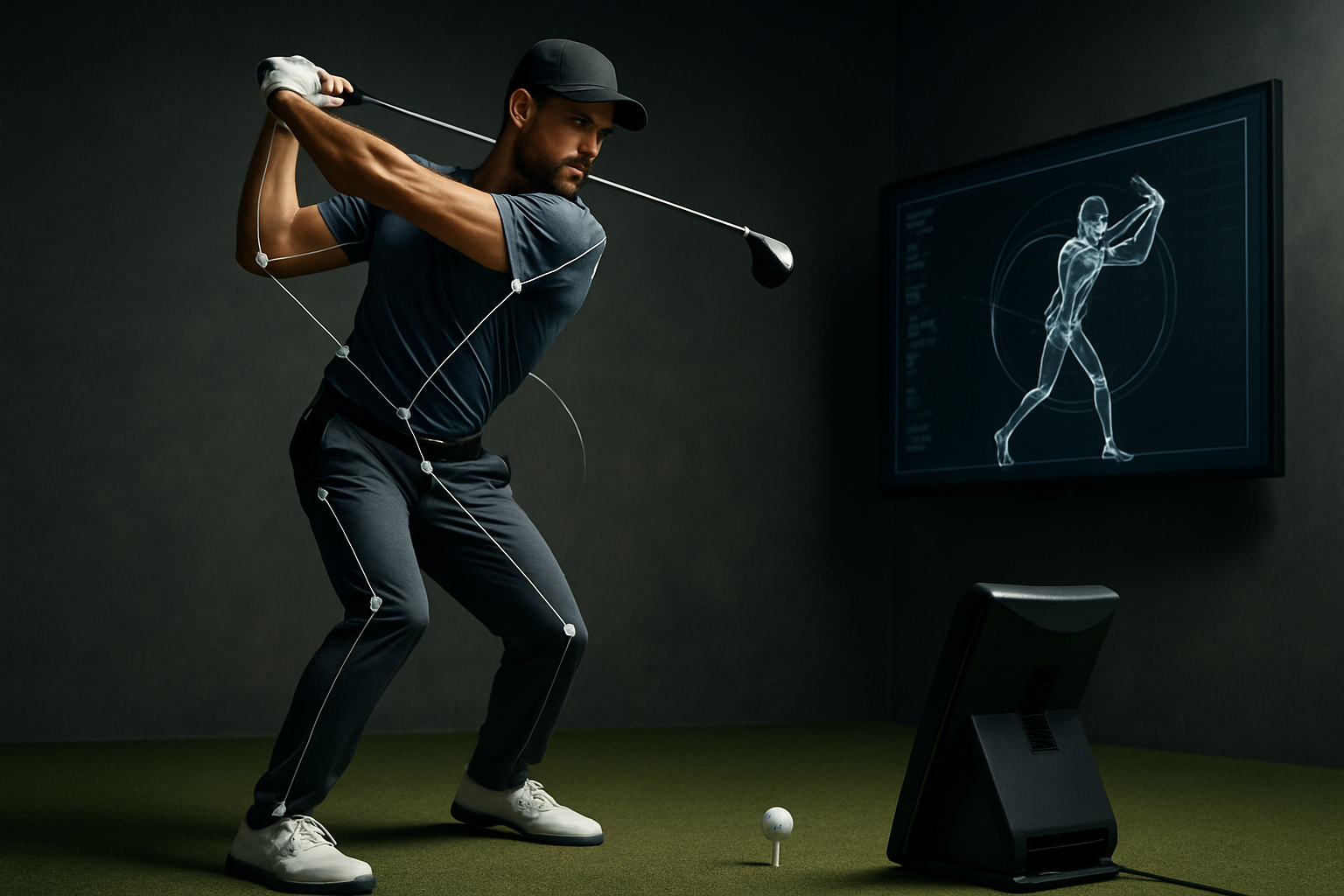Biomechanics of the Perfect Golf Swing
The golf swing, a seemingly simple motion, is a complex interplay of physics, physiology, and technique. For decades, golfers and scientists alike have sought to unlock the secrets of the perfect swing, analyzing every nuance from stance to follow-through. This pursuit has led to groundbreaking insights in sports biomechanics, revolutionizing how we understand and teach this iconic movement.

The Foundations of Golf Swing Biomechanics
The study of golf swing biomechanics dates back to the early 20th century, but it wasn’t until the advent of high-speed cameras and motion capture technology that researchers could truly dissect the intricacies of the swing. Early pioneers like Dr. Alister MacKenzie and Bobby Jones laid the groundwork, emphasizing the importance of rhythm and balance. However, it was the work of biomechanists in the latter half of the century that brought scientific rigor to these observations.
One of the most significant breakthroughs came with the concept of the kinematic sequence. This theory, developed by Dr. Phil Cheetham in the 1980s, describes the optimal order of body segment rotations during the swing. According to Cheetham’s research, the most efficient swings follow a specific pattern: pelvis rotation, followed by torso, then arms, and finally the club. This sequence maximizes energy transfer and clubhead speed, forming the backbone of modern swing analysis.
Another crucial aspect of swing biomechanics is the role of ground reaction forces. Studies using force plates have shown that the interaction between a golfer’s feet and the ground is critical for generating power. The ability to effectively push against the ground, particularly during the downswing, allows golfers to create a stable base from which to rotate and accelerate the club.
The X-Factor: Torso-Pelvic Separation
One of the most discussed concepts in golf swing biomechanics is the “X-Factor,” a term coined by Jim McLean in the 1990s. The X-Factor refers to the difference in rotation between the shoulders and hips at the top of the backswing. Research has shown that a larger X-Factor can lead to increased clubhead speed and, consequently, greater distance.
However, recent studies have refined our understanding of the X-Factor. It’s not just the magnitude of separation that matters, but also how quickly a golfer can increase this separation during the downswing—a phenomenon known as X-Factor stretch. This dynamic stretching of the core muscles allows for greater energy storage and release, much like drawing back a slingshot before release.
Interestingly, the pursuit of an extreme X-Factor can lead to diminishing returns and increased injury risk. Biomechanists now emphasize the importance of finding an optimal, rather than maximum, X-Factor based on an individual’s physical capabilities and swing characteristics.
The Role of Segmental Sequencing
The concept of segmental sequencing builds upon the kinematic sequence, focusing on how energy is transferred through the body during the swing. This process is often likened to a whip, with energy flowing from the larger, more proximal segments (like the hips and torso) to the smaller, distal segments (arms and hands).
Research using 3D motion capture has revealed that the most skilled golfers exhibit a proximal-to-distal sequencing pattern. This means that each body segment reaches its peak angular velocity in a specific order, starting with the hips and progressing through the torso, arms, and finally the club. This sequence allows for the most efficient transfer of energy, resulting in maximum clubhead speed at impact.
However, achieving optimal segmental sequencing is no easy feat. It requires precise timing and coordination, often developed through years of practice and refinement. Golfers who struggle with this aspect of their swing may experience power leaks or inconsistency in their ball striking.
The Impact of Modern Technology on Swing Analysis
The advent of advanced technology has revolutionized how we study and understand the golf swing. High-speed cameras capable of capturing thousands of frames per second allow for unprecedented detail in swing analysis. Motion capture systems, originally developed for the film industry, now provide three-dimensional data on every aspect of a golfer’s movement.
One of the most significant technological advancements in recent years has been the development of launch monitors. These devices use doppler radar or high-speed cameras to track the ball’s flight characteristics and the club’s movement through impact. This data provides invaluable insights into the relationship between swing mechanics and ball flight, allowing for more targeted improvements.
Wearable sensors have also become increasingly popular in golf biomechanics research. These devices can measure muscle activation, joint angles, and even force production in real-time. This technology allows researchers and coaches to analyze swings outside of the laboratory setting, providing more realistic data on how golfers perform in actual playing conditions.
Individualization: The Future of Golf Swing Biomechanics
As our understanding of golf swing biomechanics has deepened, so too has the recognition that there is no one-size-fits-all approach to the perfect swing. While certain principles remain constant, the optimal swing for each golfer depends on their unique physical characteristics, strengths, and limitations.
This realization has led to a shift towards individualized biomechanical analysis and coaching. Advanced screening tools now allow biomechanists to assess a golfer’s physical capabilities, identifying areas of strength and potential limitations. This information can then be used to develop a swing that maximizes efficiency while minimizing injury risk.
For example, a golfer with limited hip mobility might focus on creating more upper body rotation to generate power, while someone with exceptional core strength might emphasize rotational speed in their swing. The key is finding a swing that works with, rather than against, an individual’s biomechanical profile.
The Mental Game: Cognitive Aspects of the Golf Swing
While biomechanics focuses primarily on the physical aspects of the golf swing, it’s important to recognize the significant role that cognitive processes play in executing the perfect swing. The intersection of biomechanics and sports psychology has become an increasingly important area of research in recent years.
Studies have shown that expert golfers exhibit different patterns of brain activity compared to novices when visualizing or executing a swing. These differences are particularly pronounced in areas of the brain associated with motor planning and execution. This suggests that the neural pathways involved in the golf swing become more efficient and refined with practice and expertise.
Moreover, research has demonstrated that mental rehearsal can lead to improvements in swing mechanics. By mentally practicing the perfect swing, golfers can reinforce neural pathways and improve their physical execution. This mind-body connection highlights the importance of integrating cognitive strategies into biomechanical training programs.
The Role of Proprioception in Swing Consistency
Proprioception, often described as the body’s ability to sense its position in space, plays a crucial role in maintaining consistency in the golf swing. This complex sensory system allows golfers to make subtle adjustments to their swing in real-time, based on feedback from muscles, joints, and the inner ear.
Recent biomechanical studies have focused on how proprioception influences swing mechanics. Research has shown that golfers with better proprioceptive abilities tend to have more consistent swings and improved shot accuracy. This has led to the development of training programs specifically designed to enhance proprioception, such as balance exercises and drills performed with eyes closed.
Furthermore, fatigue has been shown to negatively impact proprioception, which can lead to deterioration in swing mechanics over the course of a round. This insight has implications for both training strategies and on-course performance management, emphasizing the importance of maintaining physical and mental freshness throughout a round of golf.
Energy Transfer and the Kinetic Chain
The concept of the kinetic chain is fundamental to understanding energy transfer in the golf swing. This principle describes how energy is generated, transferred, and ultimately released through a series of interconnected body segments. In golf, an efficient kinetic chain allows for maximum energy transfer from the ground, through the body, and into the club.
Biomechanical research has identified several key points in the kinetic chain that are critical for an efficient golf swing. These include:
-
Ground force generation: The ability to effectively push against the ground, particularly with the trail foot during the downswing.
-
Hip rotation: Initiating the downswing with powerful hip rotation sets the foundation for the rest of the kinetic chain.
-
Core stability: A stable core acts as a conduit for energy transfer between the lower and upper body.
-
Shoulder rotation: The shoulders should lag behind the hips, creating torque and storing potential energy.
-
Arm extension: Properly timed arm extension helps to release the stored energy into the club.
-
Wrist uncocking: The final release of energy occurs as the wrists uncock through impact.
Breakdowns at any point in this chain can lead to power leaks and inconsistency. Advanced biomechanical analysis can identify weak links in a golfer’s kinetic chain, allowing for targeted improvements in technique or physical conditioning.
The Impact Zone: Milliseconds That Matter
While the entire golf swing is important, it’s the fraction of a second around impact that ultimately determines the ball’s flight. This critical phase, often referred to as the impact zone, has been the subject of intense biomechanical scrutiny.
High-speed cameras have revealed that the clubhead is in contact with the ball for only about 0.0005 seconds during a typical drive. In this brief moment, the club’s path, face angle, and speed all play crucial roles in determining the ball’s initial launch conditions.
Biomechanical research has shown that elite golfers are able to maintain remarkably consistent impact conditions, despite variations in their overall swing patterns. This suggests that the body has an innate ability to make subtle adjustments in the milliseconds before impact to optimize contact.
One interesting finding from impact zone research is the concept of “gear effect.” This phenomenon occurs when the ball impacts the clubface away from the sweet spot, causing the clubhead to rotate slightly. This rotation imparts additional spin on the ball, which can help to straighten out off-center hits. Understanding and harnessing the gear effect has become an important aspect of club design and fitting.
Injury Prevention and Swing Biomechanics
As our understanding of golf swing biomechanics has advanced, so too has our ability to identify and mitigate injury risks associated with the repetitive nature of golf. The golf swing places significant stress on various parts of the body, particularly the lower back, shoulders, and wrists.
Biomechanical analysis has revealed that certain swing characteristics can increase the risk of specific injuries. For example, an over-the-top swing path can lead to increased stress on the leading elbow, potentially causing golfer’s elbow. Similarly, excessive lateral slide during the downswing can put undue stress on the lower back.
By identifying these risk factors, biomechanists and physical therapists can work together to develop swing modifications and strength training programs that reduce injury risk without sacrificing performance. This proactive approach to injury prevention has become increasingly important as golfers seek to extend their competitive careers and maintain their ability to enjoy the game well into their later years.
The Role of Equipment in Swing Biomechanics
While much of golf biomechanics focuses on the human body, it’s important to recognize the significant role that equipment plays in the overall swing system. The club acts as an extension of the golfer’s body, and its properties can have a profound impact on swing mechanics and performance.
Recent advancements in club technology, such as adjustable weighting and variable face thickness, have given golfers unprecedented ability to fine-tune their equipment. However, these advancements have also necessitated a more sophisticated approach to club fitting.
Biomechanical analysis now plays a crucial role in the club fitting process. By analyzing a golfer’s swing characteristics, fitters can recommend equipment specifications that complement their natural tendencies. For example, a golfer with a steep swing plane might benefit from a more upright lie angle, while someone with a slower swing speed might see improvements with a more flexible shaft.
Furthermore, the interaction between the club and the ball at impact has become an area of intense study. Factors such as clubhead design, face materials, and grooves all influence how energy is transferred to the ball. Understanding these interactions allows equipment manufacturers to design clubs that maximize performance within the rules of golf.
The Future of Golf Swing Biomechanics
As technology continues to advance, the field of golf swing biomechanics is poised for even greater breakthroughs. Artificial intelligence and machine learning algorithms are beginning to analyze vast amounts of swing data, identifying patterns and insights that might elude human observers.
Virtual and augmented reality technologies are also showing promise in golf instruction. These tools allow golfers to visualize and feel the perfect swing in ways that were previously impossible. By providing immediate, intuitive feedback, these technologies have the potential to accelerate the learning process and make high-level biomechanical concepts more accessible to the average golfer.
Another exciting area of research is the integration of biomechanics with other scientific disciplines. For example, geneticists are exploring how certain genetic markers might predispose individuals to particular swing characteristics or learning styles. This could lead to even more personalized approaches to golf instruction and training.
As our understanding of the perfect golf swing continues to evolve, one thing remains clear: the pursuit of excellence in this seemingly simple yet endlessly complex motion will continue to drive innovation in sports science for years to come.
Conclusion: The Never-Ending Quest for Perfection
The biomechanics of the perfect golf swing represents a fascinating intersection of physics, physiology, and technology. From the foundational work of early golf instructors to the cutting-edge research being conducted in biomechanics laboratories around the world, our understanding of this intricate movement continues to deepen.
While we may never achieve a truly “perfect” swing that works for every golfer, the insights gained from biomechanical research have revolutionized how we approach golf instruction, equipment design, and performance optimization. The individualized approach that has emerged from this research recognizes the unique physical attributes and swing tendencies of each golfer, allowing for more targeted and effective improvements.
As we look to the future, the continued integration of advanced technologies and interdisciplinary approaches promises to unlock even more secrets of the golf swing. From AI-powered swing analysis to genetically-informed training programs, the possibilities are as exciting as they are vast.
Ultimately, the quest for the perfect golf swing is a testament to the human drive for excellence and understanding. It reminds us that even in a sport with centuries of history, there is always more to learn, discover, and perfect. Whether you’re a professional golfer, a weekend enthusiast, or a sports scientist, the biomechanics of the golf swing offers a rich field of study and a never-ending source of fascination.
As golfers continue to strive for that elusive perfect swing, biomechanists will be there, analyzing, measuring, and pushing the boundaries of our understanding. In this ongoing pursuit, every drive down the fairway becomes not just a test of skill, but a data point in the grand experiment of human performance. The perfect golf swing may always remain just out of reach, but the journey towards it will undoubtedly lead to remarkable advancements in both the sport of golf and the science of human movement.




